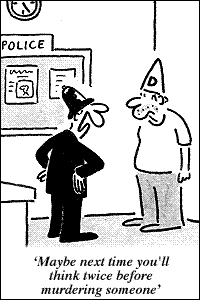
Troy's briefs - changed weekly.
.
Dispelling a Myth. > The EU has kept the peace in Europe.
.
The myth is often trotted out that the EU has kept peace in Europe for almost sixty years and if it did not exist, there would undoubtedly be war between the various protagonists.
There is an unresolvable paradox at the heart of the European project. Its aim is supposedly to preserve European values and ideals from …. the Europeans, since the main reason for the formation of the European Union, according to numerous preambles to treaties, is the bad behaviour of the people of Europe in the past.
.
Unfortunately, the values and ideals were also created by those badly behaved Europeans in conditions that the European Union is now desperate to abolish, that is small and medium-sized, competing political entities. Thus you get the odd notion that “Europe” will keep the peace against the Europeans.
.
The truth of it all is that by the time the aritects of the EU - Monnet, Schuman and the others - got going on the “European project”, in all seriousness the political situation in the world had changed irrevocably.
As early as the Schuman declaration of the need for European integration (actually written by Monnet) in 1950 it was too late. The problem for which Schuman was putting forward a solution no longer existed.
.
The ideas of European integration were first mooted between the wars but became particularly powerful after 1945 when Europe was so devastated. Even so the number of people who thought integration was the answer was very small; far more believed that economic reconstruction and the development of democracy would be the answer.
.
That is why so much of the early part of the project had to be conducted in secrecy.The early founding fathers’ aim was European integration because that is what they believed in. But the notion had to be sold and the idea of peace was a powerful one after 1945.
.
There was another paradox, though a less important one here, in that the idea of peace and need to control aggression was propounded by historically the most aggressive state in Europe: France. The French having been defeated in three successive wars by the Germans, were, therefore, the victims and could point to the Germans as the eternal aggressors who had to be controlled. In fact, with the development of nuclear weapons and the growth of the two superpowers, the USA and the Soviet Union, the question of possible Franco-German wars became a non-issue.
.
The enemy of the West was further east, just as the enemy of the West now is in the south and the east. European integration became an unimportant side-issue.
.
Not the EEC, not the EC, not even the EU could protect anyone from the Soviet Union without a great deal of American help; they could not fight communism world-wide; and they cannot fight terrorism now.
.
The EU can ensure that Denmark does not invade the Netherlands and that’s about it.
.
It is not political structures that create political reality but the other way round. The reality was that the West, and within not too many years West Germany became part of the West, was not going to indulge in internecine warfare; the reality was that France and Germany neither could nor would fight each other again.
.
The structure of European integration grew out of that and is now looking distinctly rickety.It is easy to go through the facts and point to the truth about peace.
Fact number one: peace was kept only in a small part of Europe, which happened to be under NATO protection and the nuclear umbrella.
.
Fact number two: this part of Europe also had American troops stationed in it and was amply provided with American military hardware. Like it or not, and many in western Europe, particularly France do not like it, but a great deal of American foreign policy in the fifty years after the World War II was taken up with the problem of protecting Western Europe.
.
Fact number three: the countries that contributed most to the protection of Western Europe and keeping the peace in it were not always those involved in the European project. Apart from the UK, the main contributions came from Turkey and Norway.
.
Fact number four: the main crises of the post war period happened outside the whole European project even if they happened in Europe. Where was the peace-keeping qualities of “Europe” when the Berlin blockade was defied, when Eastern Europe rose in revolt, when the Berlin wall went up? Discussing the Common Agricultural Policy, that’s where. There is no need even to mention problems outside Europe, like the Cuban crisis, the Vietnam war, the wars in Africa and Latin America.
.
Fact number five: the actual creation of a European Union in the Treaty of Maastricht coincided with the break-up of the Soviet Union and Yugoslavia. While the EU’s influence on events in the former USSR was strictly limited, in the former Yugoslavia it played a baneful part: by trying to construct a common foreign policy through encouraging Serbia under Milosevic to keep the “country” together at whatever cost and by imposing an arms ban on all the other participants, the EU helped to prolong the war and increase the number of victims. Fierce hostilities and massacres were taking place on European soil once again as the European Union was entering what was perceived to be the final stage of integration and, as expected, it was NATO, led by the Americans that imposed some kind of a temporary solution.
.
Fact number six: The EU is now systematically undermining the one successful alliance that did keep the peace in Western Europe: NATO, without putting very much by way of protection in its place and all for what? To give itself a notional and structural foreign and security policy.
.
So let us forget the EU’s outdated attitudes towards politics, war and peace; it is unlikely to do us any good and unlikely to keep or create peace where it matters.
.

 .
.











 The traditional advert has always ended with a clean cut yummy-mummy figure arriving at the checkout, turning towards the camera winking coquettishly, sticking her rear out and patting herself on the bottom with a knowing look. No need for any spanking new changes then !
The traditional advert has always ended with a clean cut yummy-mummy figure arriving at the checkout, turning towards the camera winking coquettishly, sticking her rear out and patting herself on the bottom with a knowing look. No need for any spanking new changes then !














































